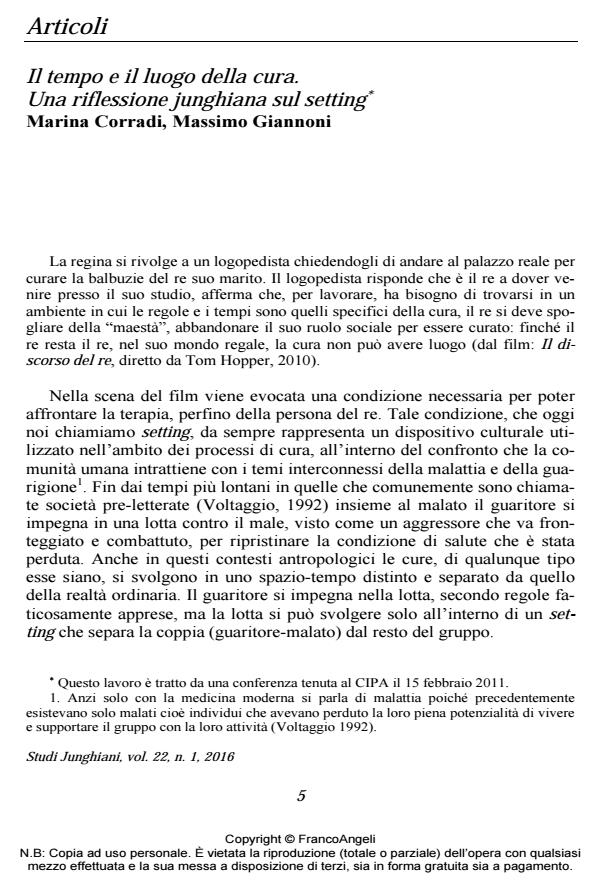Il tempo e il luogo della cura. Una riflessione junghiana sul setting
Titolo Rivista STUDI JUNGHIANI
Autori/Curatori Marina Corradi, Massimo Giannoni
Anno di pubblicazione 2016 Fascicolo 2016/43
Lingua Italiano Numero pagine 22 P. 5-26 Dimensione file 357 KB
DOI 10.3280/JUN2016-043001
Il DOI è il codice a barre della proprietà intellettuale: per saperne di più
clicca qui
Qui sotto puoi vedere in anteprima la prima pagina di questo articolo.
Se questo articolo ti interessa, lo puoi acquistare (e scaricare in formato pdf) seguendo le facili indicazioni per acquistare il download credit. Acquista Download Credits per scaricare questo Articolo in formato PDF

FrancoAngeli è membro della Publishers International Linking Association, Inc (PILA)associazione indipendente e non profit per facilitare (attraverso i servizi tecnologici implementati da CrossRef.org) l’accesso degli studiosi ai contenuti digitali nelle pubblicazioni professionali e scientifiche
Si propone una riflessione sul setting, sostenendo la tesi che esiste un rapporto necessitante tra la cornice (interna ed esterna) in cui si svolge la cura (setting) e la teoria del funzionamento psichico che organizza la prassi terapeutica. Nella tradizione freudiana, pur essendo state introdotte negli anni alcune variazioni, si sono sempre rintracciati gli elementi di continuità con le posizioni del fondatore. Con l’introduzione del paradigma relazionale emergono invece elementi di notevole discontinuità rispetto al setting freudiano classico e si aprono nuove riflessioni sul setting e sulle sue possibili variazioni. Cerchiamo di definire uno specifico setting junghiano, che trovi nelle teorie del funzionamento psichico di Jung il suo fondamento. Vengono inoltre evidenziate convergenze e differenze del setting junghiano rispetto a quello proposto dalla psicoanalisi relazionale.
Parole chiave:Setting, teoria della cura, psicoanalisi relazionale, setting junghiano, enactment
- Setting e processi dissociativi Gianluigi Di Cesare, Fabrizio Alfani, in STUDI JUNGHIANI 47/2018 pp.47
DOI: 10.3280/JUN2018-047004
Marina Corradi, Massimo Giannoni, Il tempo e il luogo della cura. Una riflessione junghiana sul setting in "STUDI JUNGHIANI" 43/2016, pp 5-26, DOI: 10.3280/JUN2016-043001